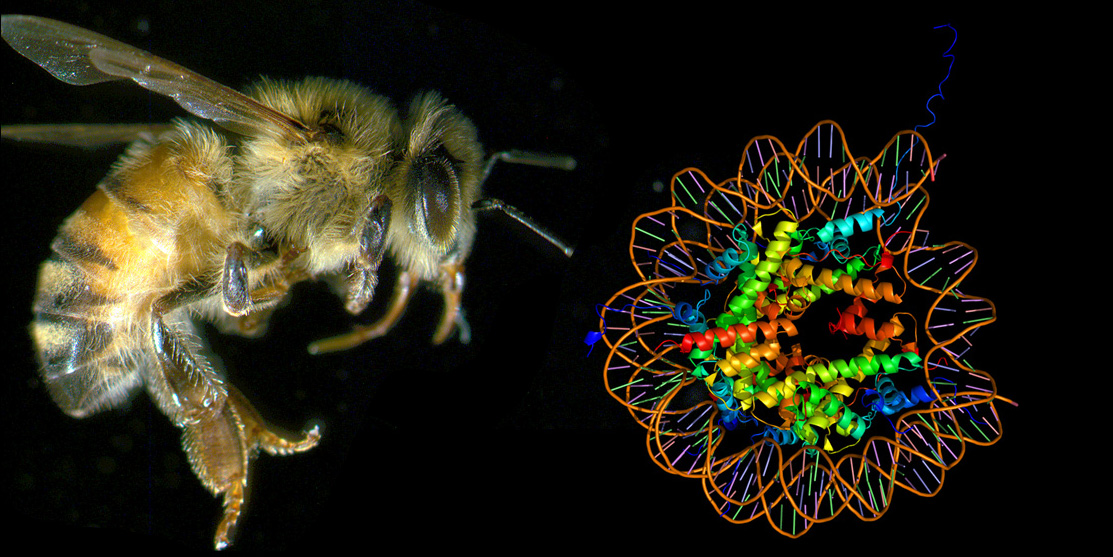
Maleszka Group - From molecules to behaviour
We are investigating diverse epigenetic mechanisms in the context of behaviour and developmental plasticity, mainly using the honey bee model.
Research themes
About
We are investigating diverse epigenetic mechanisms in the context of behaviour and developmental plasticity, mainly using the honey bee model, but we also have close interactions with groups working on other interesting systems.
Publications
Selected publications
Maleszka R. (2024) Reminiscences on the honeybee genome project and the rise of epigenetic concepts in insect science. Insect Mol Biol. doi: 10.1111/imb.12888.
Kucharski R, Ellis N, Jurkowski TP, Hurd PJ, Maleszka R. (2023) The PWWP domain and the evolution of unique DNA methylation toolkits in Hymenoptera. iScience. 26(11):108193.
Wedd L, Kucharski R, Maleszka R. (2022) DNA Methylation in Honey Bees and the Unresolved Questions in Insect Methylomics. Adv Exp Med Biol. 2022;1389:159-176.
Maleszka R, Kucharski R (2022) Without mechanisms, theories and models in insect epigenetics remain a black box. Trends Genet. 38(11):1108-1111.
Wojciechowski M, Lowe R, Maleszka J, Conn D, Maleszka R, Hurd PJ. (2018) Phenotypically distinct female castes in honey bees are defined by alternative chromatin states during larval development. Genome Res. 28:1532-1542.
Wedd, L, Kucharski R, Maleszka R (2016) Differentially methylated obligatory epialleles modulate context-dependent LAM gene expression in the honey bee Apis mellifera. Epigenetics. 11: 1-10.
Foret S, Kucharski R, Pellegrini M, Feng S, Jacobsen SE, Robinson GE, Maleszka R (2012) DNA methylation dynamics, metabolic fluxes, gene splicing, and alternative phenotypes in honey bees. Proc Natl Acad Sci U S A. 109:4968-4973.
Lyko, F, Foret, S, Kucharski, R, Wolf, S, Falckenhayn, C, Maleszka, R (2010) The Honey Bee Epigenomes: Differential Methylation of Brain DNA in Queens and Workers. PloS Biol. 8, e1000506.
Kucharski, R, Maleszka, J., Foret, S. Maleszka, R (2008) Nutritional control of reproductive status in honey bees via DNA methylation. Science. 319:1827-1830.
Wang, Y, Jorda, M. Jones, PL, Maleszka, R, et al (2006) Functional CpG Methylation System in a Social Insect. Science. 314, 645-647.
Drapeau, M.D., Albert, S., Kucharski, R, Prusko, C., Maleszka, R. (2006) Evolution of the Yellow / Major Royal Jelly Protein family and the emergence of social behavior in honeybees. Genome Res. 16, 1385-1394. [Cover article]
Maleszka as a member of the Honey Bee Genome Consortium (2006) Insights into social insects from the genome of the honey bee Apis mellifera. Nature, 443, 931-949. [Cover article]




